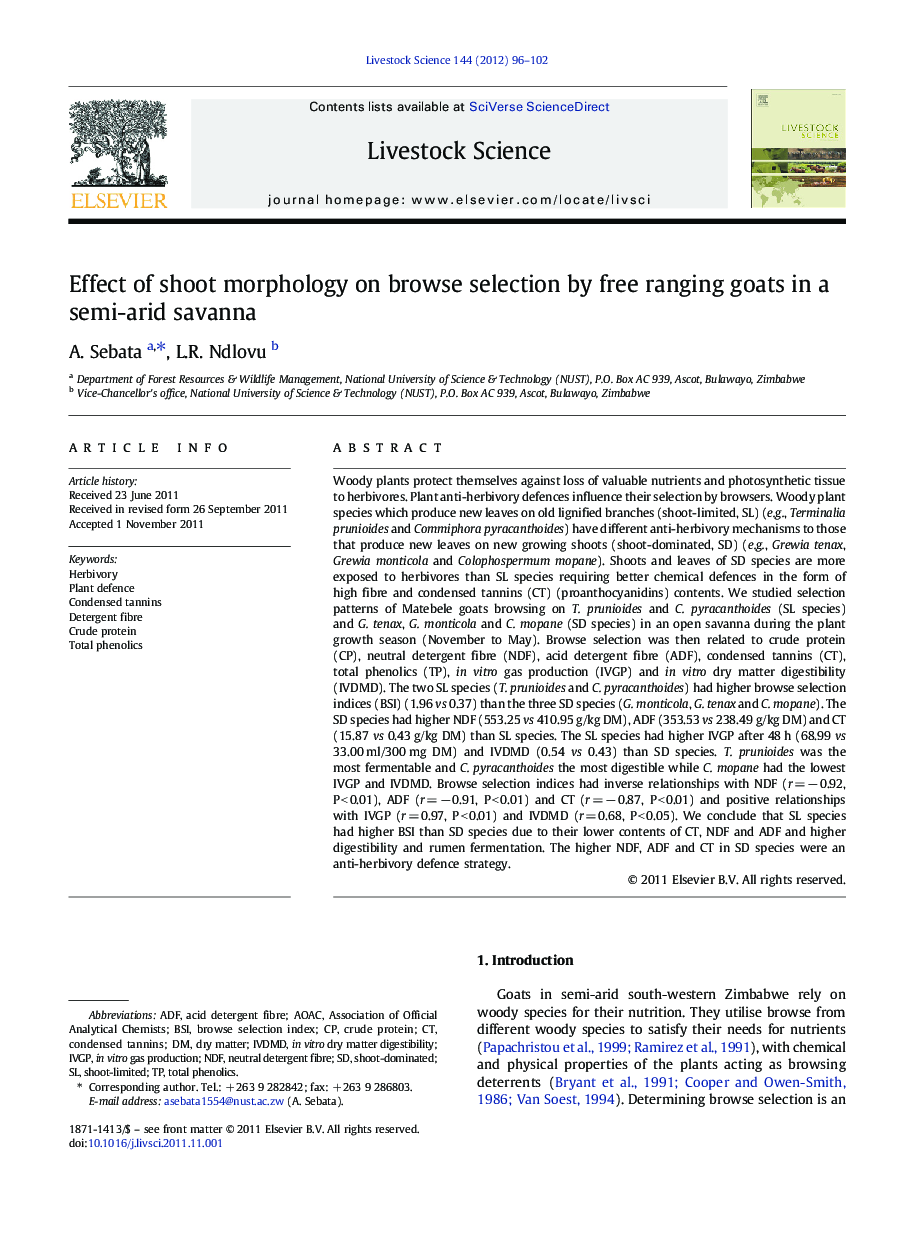| Article ID | Journal | Published Year | Pages | File Type |
|---|---|---|---|---|
| 5790930 | Livestock Science | 2012 | 7 Pages |
Abstract
Woody plants protect themselves against loss of valuable nutrients and photosynthetic tissue to herbivores. Plant anti-herbivory defences influence their selection by browsers. Woody plant species which produce new leaves on old lignified branches (shoot-limited, SL) (e.g., Terminalia prunioides and Commiphora pyracanthoides) have different anti-herbivory mechanisms to those that produce new leaves on new growing shoots (shoot-dominated, SD) (e.g., Grewia tenax, Grewia monticola and Colophospermum mopane). Shoots and leaves of SD species are more exposed to herbivores than SL species requiring better chemical defences in the form of high fibre and condensed tannins (CT) (proanthocyanidins) contents. We studied selection patterns of Matebele goats browsing on T. prunioides and C. pyracanthoides (SL species) and G. tenax, G. monticola and C. mopane (SD species) in an open savanna during the plant growth season (November to May). Browse selection was then related to crude protein (CP), neutral detergent fibre (NDF), acid detergent fibre (ADF), condensed tannins (CT), total phenolics (TP), in vitro gas production (IVGP) and in vitro dry matter digestibility (IVDMD). The two SL species (T. prunioides and C. pyracanthoides) had higher browse selection indices (BSI) (1.96 vs 0.37) than the three SD species (G. monticola, G. tenax and C. mopane). The SD species had higher NDF (553.25 vs 410.95 g/kg DM), ADF (353.53 vs 238.49 g/kg DM) and CT (15.87 vs 0.43 g/kg DM) than SL species. The SL species had higher IVGP after 48 h (68.99 vs 33.00 ml/300 mg DM) and IVDMD (0.54 vs 0.43) than SD species. T. prunioides was the most fermentable and C. pyracanthoides the most digestible while C. mopane had the lowest IVGP and IVDMD. Browse selection indices had inverse relationships with NDF (r = â 0.92, P < 0.01), ADF (r = â 0.91, P < 0.01) and CT (r = â 0.87, P < 0.01) and positive relationships with IVGP (r = 0.97, P < 0.01) and IVDMD (r = 0.68, P < 0.05). We conclude that SL species had higher BSI than SD species due to their lower contents of CT, NDF and ADF and higher digestibility and rumen fermentation. The higher NDF, ADF and CT in SD species were an anti-herbivory defence strategy.
Keywords
Related Topics
Life Sciences
Agricultural and Biological Sciences
Animal Science and Zoology
Authors
A. Sebata, L.R. Ndlovu,
